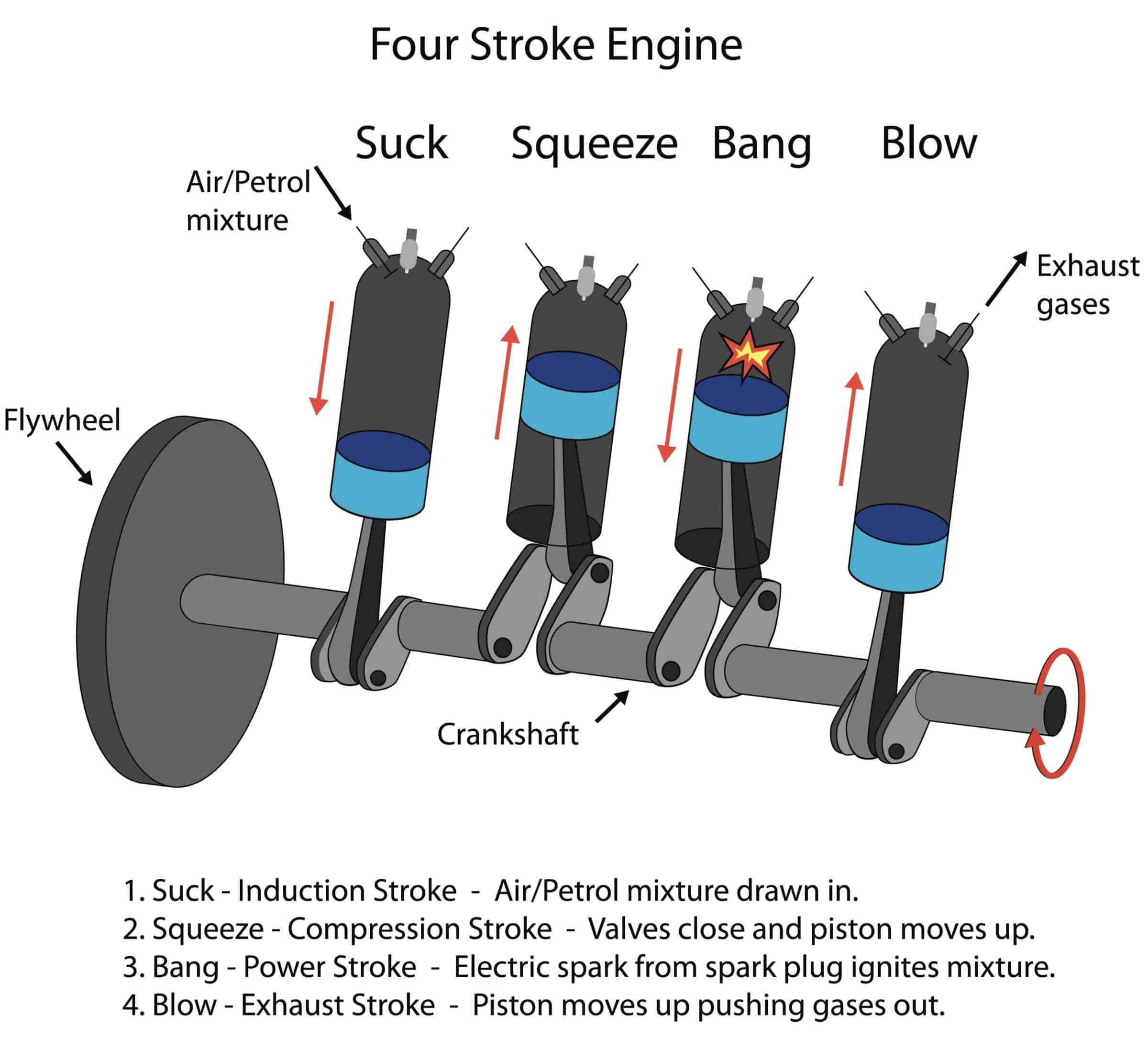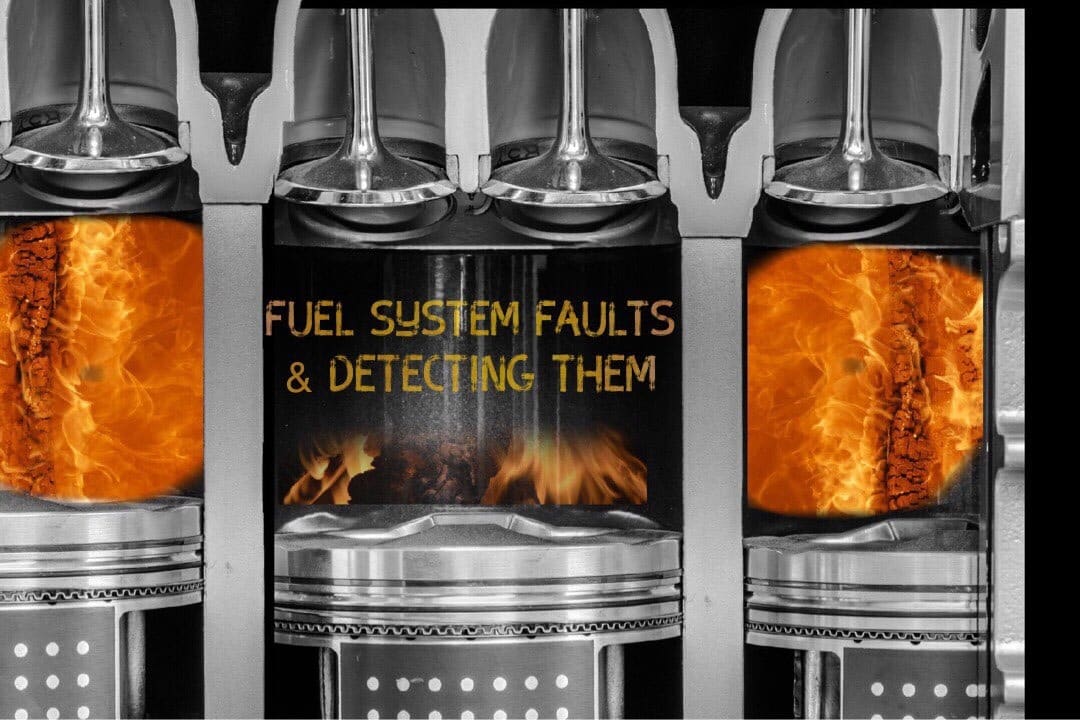This article will answer the following questions:
- How do you detect a fuel leak with fluid analysis?
- Why is my engine oil level rising?
- How can I tell if the quality of my fuel is of a poor quality?
- What is blow-by?
- Why is my fuel filter black?
- Why do I need to use an approved oil?
There are many different types of diesel fuelled engines from small car sized engines to huge generator and marine engines the size of buildings with truck and off-highway plant machinery somewhere in between.
With such a variation in engine types you could assume that the technology and problems are completely different. True, there are many differences and the repair work and logistics of replacing certain components can range from tasks your local car engine enthusiast can perform to tasks that require a large team, lifting equipment, cranes, hoists etc to perform a simple component replacement on some of the larger engines.
The very largest engines are low speed cross head engines on the world’s largest ships, that fall somewhat within the 2-stroke engine category, but very much different to your average lawnmower 2 stroke engine. Equally, the makeup of these cross head systems tends to be a little different to the more familiar to most 4 stroke engines, but some of the fuel problems encountered still overlap with your average car engine. This article will try to give a broad outline of fuel system faults and cover some of the most common failure mechanisms common to many engine types. For more specific fuel faults on specific engine types your engine manufacturers guidelines should be consulted for fault finding.
General theory of combustion and engine wear metals
Many of you are likely familiar with the general principle of how the combustion process works so feel free to skip this section if this is teaching grannies to suck eggs, but for those that need a reminder the short diagrams below should aid in explaining the combustion process of an engine in a four stroke as below:

…or in a two stroke engine like below.

Equally even for the seasoned experts in engine combustion processes it is also worth noting this quick anatomy of an engine wear elements, as these are often crucial to aiding identify the source of a problem including fuel dilution. In addition to these below to identify sources such as worn rings, in marine engines it is also worth noting nickel and vanadium levels as these can indicate heavy fuel oil (HFO) ingress.

How do I tell if I have a fuel leak in my engine and what should I do next?
Some general indicators of a fuel leak include:
- Increased fuel consumption – in fact a fuel leak can dramatically increase your fuel consumption, so rather than blaming the manufacturer your vehicle isn’t getting the miles per gallon expected try testing your engine oil for fuel dilution.
- Increased sooting of oil – the higher the fuel to air mixture the less oxygen there will be to fully burn the fuel leading to soot production. Soot and fuel in these terms can be thought of as analagous to charcoal and wood, ie. the incomplete combustion of the latter in each case.
- Smoke from exhaust – this is linked to the unburnt fuel being black and sooted as the exhaust gases leave out the exhaust. This is usually black smoke, but with the increasingly efficient after treatments including diesel particulate filtration this may be limited to a much paler or even white smoke which is usually associated with water.
- Diesel Particulate Filter early blocking – high soot content from partially or not fully burnt fuel can lead to increased blocking and may be an indicator of a fuel leak, but can also indicate other issues such as using a high SAPs (ash) oil.
- Increasing oil level / less frequent topups– if you have fuel being added to your engine oil, the level of your oil will naturally increase or the frequency of top-ups required may decrease.
If you are not already taking regular samples then you might want to look at the recent sample results or even take a new sample to help identify the problem. Things to look for include:
- Viscosity decreasing.
- High Fuel contamination on report.
- Dilution of Additives and wear metals by the fuel.
- Increasing nickel and vanadium (marine only).
- Upper cylinder wear (iron, chrome and aluminium).
Common fuel problems and their identification
Note every fuel system is different, so please consult with your equipment manufacturer for advice before undertaking any costly repairs or maintenance actions off the back of a single report.
Injectors Over-fueling / Seal leaks
These can include injector leaks and cracks etc. The earliest warning signs for these include:
- Decreasing engine oil viscosity – diesel is much thinner than lubricating oil
- Increasing fuel level or decreasing flash point on the oil report.
- Decreased fuel efficiency of engine.
- Reduced top-ups requirement.
- Increasing oil level – sometimes referred to colloquially as the engine is ‘making oil’ to reflect the rising oil level rather than it is actually generating oil.
- Engine oil additives appearing in fuel – yes that’s right seal leakage is not always 100% fuel into oil dilution and can also include low level oil in fuel dilution. Over time this can lead to traces of engine oil additives detected in the fuel itself or blackened fuel filters easily mistaken for a fuel bug.
Fuel system not delivering fuel
Causes of the fuel system not delivering fuel include the obvious of a having run out of fuel in the tank and faulty fuel gauges not indicating the level has depleted. However, the main problems tend to be due to injector blockage, filter blockage or waxing.
- Waxes – Diesel when exposed to cold temperatures forms paraffin waxes – (very similar to your household candle material). This is normal for any petroleum products for them to form waxes under cold temperatures. However the significance is how cold the fuel needs to get for the waxes to cause blockage of fuel filters and fuel pathways. The point when a fuel begins to become solid is a pour point, which naturally the fuel will not be able to be pumped around the fuel system at this point. However, the problems come much earlier with injector and filter blockages tested by the cloud point (the point when visible waxes begin to form causing a cloudy appearance), and the Cold filter Plugging Point (CFPP) which is linked to points the filters will become blocked. More can be found about these tests on the EN590 article here.
- Fuel bugs -microbial growth within the fuel system (often called fuel bugs) commonly occurs because of water contamination. The water when it reaches the paper fuel filters wets the paper, warping and partially blinding the filter. The wet filter in a then forms an ideal environment for microbial growth which block filters leading to restricted flow of fuel.
- Blocked Injectors – Blocked injectors can be linked to fuel quality and contamination. Ultra-low sulphur diesel without the presence of replacement lubricity improvers such as biodiesel (FAME) can give low lubricity and lead to seizure of the injector. However, problems with lubricity tend to be extremely rare and siezeures are often more linked to contamination and blockage. Typical fuel filters tend to filter down to between 5 and 8 microns depending on the fuel filter manufacturer. This often cannot be much finer as the filtration also has to handle the flow rate and pressures of the system. However, the tolerances within a fuel system can be <1 micron at certain parts meaning that very fine debris that is not filtered out and passes through the filter can cause blockage of injectors. Hence it is crucial as part of any fuel condition monitoring programme to regularly monitor visible sediment, total insoluble contamination and particle count.
Injector deposits, ashing and early firing
A common reason an engine may be investigated can be down to simple knocking or misfiring. Some of these may be related to software issues on more modern engines or timings on older engines. However there are a few issues that can be identified through regular fluid analysis. These are:
- Misfueling – filling with the wrong fuel such as petrol, kerosene or high biodiesel instead of petroleum diesel for instance alters the way the fuel combusts meaning combustion is not starting at top dead centre and causing knocking. Adulterated or poor quality fuel can also have altered properties leading to potential running problems. Regular fuel analysis helps detect these situations.
- Wrong oil – one of the most common questions we are asked by engine manufacturers following engine failures is to check if the end user used the wrong oil by providing a reference of the approved oil to compare to the oil in the engine. This is because warranties can be invalidated by using the wrong engine oils. This is not just a sales spin reason to promote more sales of the manufacturers brand oil, but more because formulating engine oils to work for certain engine types is very complicated. With most industrial hydraulics and gears you can actually calculate yourself the types of oils to use based on running speed, shaft diameters etc, however, with engines it really comes down to test bed analysis to truly confirm it works. Generally this is done at the additive manufacturing part of lubricant manufacture rather than final products so unless the additive is exclusive to one OEM you can have multiple oils under different brands all using the same additive package and hence all carrying the OEM approvals. Wrong oils can cause multiple faults in the engine usually resulting in loss of performance, more wear, reduced component life etc. However, in terms of this article using an oil with too high ash content or adding high ash aftermarket additives when low SAPs oils are required, can lead to deposits around the upper cylinder. These deposits are generated by the small amounts of lube oil getting past the cylinder rings, burning with the fuel leaving behind the metal ash-forming oil additives termed ash. This ash can be polluting to the environment, blocks diesel particulate filters and also causes early ignition as the glowing embers still remaining cause early burning of the fuel before top dead centre.
Risks of not identifying and resolving fuel problems early with oil and fuel analysis
Fuel dilution is a major cause of accidental vehicle fires where excessive fuel dilution actually makes the engine oil flammable at operating temperatures. For instance the average closed system flashpoint of diesel is approximately 60’C compared to your engine oil of >200’C. When the engine temperature is going to be around 90’C then it is not hard to see there is a high risk of the fire when there is excessive fuel dilution.
There is also a large financial impact of not performing fluid analysis. Considering fuel is one of the largest running costs for any engine and often one of the largest costs in a whole business the impact can be tremendous. Using poor quality or contaminated fuel can lead to a cost of up to 12% extra on your annual fuel bill.
Fuel is a very poor lubricant when compared to engine oil so it is important to remember the risk of failure greatly increases with higher fuel dilution and other fuel system faults. Hence, regular fluid analysis is a great way to prevent engine failures and minimise both their risk and impact to your business.
If you want to test your oil, fuel or filters of your engine then click the blue chat icon below and ask us for help in starting your fluid analysis programme.


